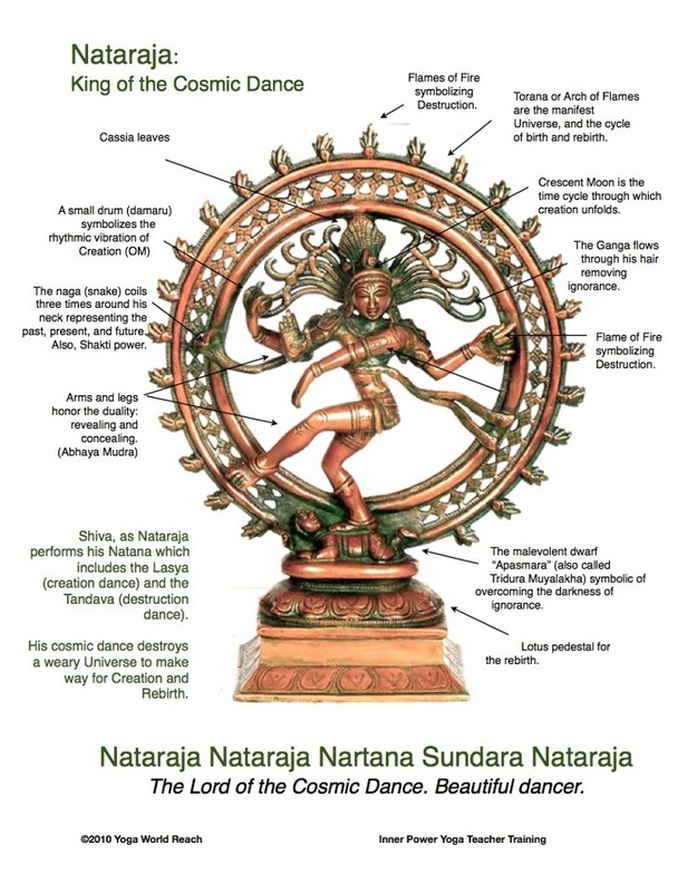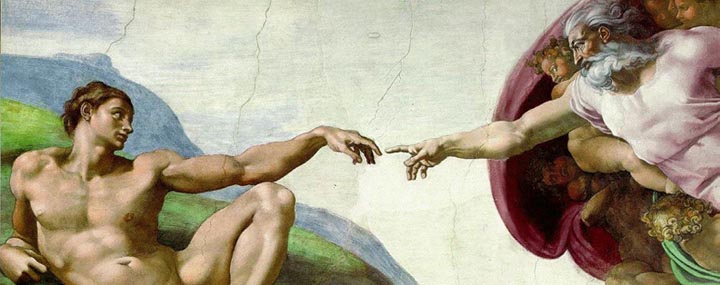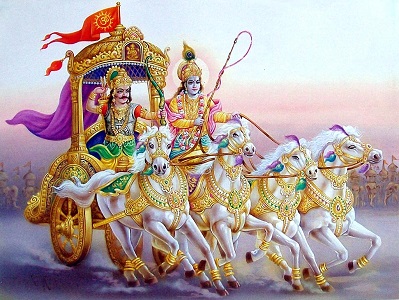|
|
Deities in the Himalayan Tradition
Swami Jnaneshvara
In our tradition deities are
thought of only as symbols, not as realities to be worshipped. Swami
Rama explains it well in his commentary on the Bhagavad Gita
(3.11-3.12), where he writes:
The ignorant think that gods dwell in celestial worlds
and have power to control
human destiny. Such gods are merely projections of one's internal
organization;
the creation of gods in the external world is a projection of the
unconscious.
The belief in gods was created to help those who are not aware of their
internal
resources and are in need of an objectification of supernatural powers.
They need to believe in gods that will help them fulfill desires that they
feel
inadequate to fulfill through their own means. It is said that those who
have
seen gods are fools, for they have seen something of their own self and
mistakenly believe that they have seen gods. Externalists have created
gods for
their own convenience, but in actuality those gods are symbols of
unknown
phenomena that occur within.
For those aspirants who cannot contemplate on the attributeless Eternal,
symbols
are recommended by spiritual teachers. In the path of meditation certain
symbols
are used to make the mind one-pointed. The student is then advised to go beyond
the symbol to comprehend its meaning rather than remaining dependent on
the
symbol forever. Thus in meditation one leaves the symbol behind and goes
forward.
The ignorant worship the symbols without knowing and understanding that
which
lives behind and beyond the symbol. But if one is capable of exploring
that
which is being expressed by the symbol, he may eventually discover the
existence
of the formless archetype that is clothed in the forms of the symbol.
With
further work he may attain direct experience of the archetypes, not as
objects
but by becoming one with the archetypes themselves.
Swami Rama writes of meditation on the formless
Absolute in his commentary on Chapter 12 of the Bhagavad Gita (3.1-3.2):
Most people cannot fathom the idea of meditation
on the Absolute, which is formless and attributeless. Only a
fortunate few are able to attain that highest state of realization.
The path of bhakti (devotion) is considered to be superior for those
who are unable to realize the pure Self. It is difficult to conceive
of meditating without a form or object on which to focus the
mind.... Whether one follows the path of bhakti or the path of jnana
(Self-realization), a one-pointed mind is important, and that cannot
be achieved without concentration. Concentration of mind and faith
are essentials for treading either path. The ordinary sadhaka or
aspirant should have a concrete form for concentration and
meditation before his mind is prepared for the higher realms.
Swami Rama describes the meaning of the symbol of
Ganapati as follows in his commentary on Chapter 3 of the Bhagavad Gita
(3.21-3.24):
In the ancient times there were no printing
presses, tape recorders, or writing paper. Therefore the ancients
left certain symbols for future generations so that they could
understand the way the ancients lived. For example, if the pictorial
symbol of Ganapati, the elephant god, is properly understood and
analyzed, it becomes clear that the ancients described the ideal
qualities of a leader through that symbol. The head of an elephant
symbolizes that a great leader should not be violent, for elephants
are very calm. They do not live on the flesh of other beings;
elephants are vegetarians, and they are both healthy and
intelligent. Using an elephant as an example dispels the notion that
it is necessary to eat meat in order to maintain health and vigor.
Ganapati has a big belly, which means the leaders should be able to
accept all sorts of suggestions from various quarters for the sake
of doing justice and selfless service to society. Ganapati is shown
with a mouse, meaning that leaders should have counselors like mice
who, with the help of their sharp teeth, can cut the net of
entanglements and conspiracy that tend to develop around leaders.
There are many other aspects, such as the cross, the star of David,
and the lotus that are adored and worshipped without knowing their
meanings. That is a serious error. The method of understanding such
symbolism is a knowledge in itself, like the method of studying
dream symbols. It should be studied if one is to understand the
world within and without.
Examples of Symbols
Following are a few examples of how this works, where
some may consider these as deities or gods to be followed, petitioned,
or worshipped, but which are actually symbols. The symbols mentioned and
the descriptions are not meant to be complete, but rather, are just to
give you an introduction to this process.
Hanuman: The monkey is held as a symbol of the
human mind, and its habit of running here and there, constantly active
and never restful; it is fickle like the monkey. Hanuman is a symbol of
training that monkey mind, bringing it to peace and tranquility. Prayer
to Hanuman as a deity is thought to bring devotion and purity.
Ganesha: While there are many other
symbolisms, Ganesha is a reminder to be like the elephant, strong and
wise. The elephant is independent, a strong creature living in the wilds
of the jungle, harming no one for food, as he is vegetarian. Others view
Ganesha as having human form, but with an elephant head; he is
petitioned as a remover of obstacles.
Brahma, Vishnu, Mahesh (Shiva, Rudra): As
symbols, these represent the three universal processes of coming into
being, existing for some time, and going (receding back into the
formless). A flower comes, is, and goes. Our lives in these physical
bodies in this world goes through this process of birth, living, and
dying. Thoughts also come, stay for a while, and naturally dissipate.
Others view these symbols as deities to be worshipped or petitioned.
Shiva and Shakti: These are universal process
of the static ground (shiva) and the active (shakti) manifesting outward
through many levels. As a metaphor, it is somewhat like the countless
words and sentences which may be written with the use of the underlying
same ink. While the ground is shiva (which is one and the same with
shakti), it is the power of shakti that manifests as the entire universe
and all its diversity. Others perform rituals as if Shiva and Shakti are
anthropomorphic beings to be solicited for various reasons.
Mahatripurasundari: Central to the practices
in our tradition is meditation and contemplation on the one
consciousness which is the source of, and permeates the three (tri)
levels (cities or "pura") of sleep, dreaming, and waking. That
consciousness is considered to be great ("maha") and most beautiful ("sundari").
Others worship her as a goddess.



There is no gray bearded god in the sky who is the creator and manager
of the physical universe. Rather, to a yogi of our tradition, this
beautiful art from the Sistine Chapel would be seen as a symbol of the
one Reality manifesting outward as life in our world, as humanity and
other beings, the expression of sat, cit, ananda (existence,
consciousness, and bliss).

Stories and Symbols
It seems to be a common human practice to wrap principles of living
inside of stories, whether through poetry, books, or screenplays. The
ancient symbols of deities were described in stories, such as Krishna in
the Bhagavad Gita, which is part of the epic poem, Mahabharata. We can
wonder if, over the coming centuries and millenia, todays stories of
heroes may also come to be perceived as deities, and treated as
religious symbols to be worshipped. We each have the choice of how to
view these characters and their stories: are they "real" or are they
symbols used to convey wisdom? Reflecting on such questions can give us
greater insight about how the ancient symbols have come to been seen as
something other than the symbols they actually are.

 
-------
This site is devoted to
presenting the ancient Self-Realization path of
the Tradition of the Himalayan masters
in simple, understandable and beneficial ways, while not compromising
quality or depth. The goal of our sadhana or practices is the highest
Joy that comes from the Realization in direct experience of the
center of consciousness, the Self, the Atman or Purusha, which is
one and the same with the Absolute Reality.
This Self-Realization comes through Yoga meditation of the Yoga
Sutras, the contemplative insight of Advaita Vedanta, and the
intense devotion of Samaya Sri Vidya Tantra, the three of which
complement one another like fingers on a hand.
We employ the classical approaches of Raja, Jnana, Karma, and Bhakti
Yoga, as well as Hatha, Kriya, Kundalini, Laya, Mantra, Nada, Siddha,
and Tantra Yoga. Meditation, contemplation, mantra and prayer
finally converge into a unified force directed towards the final
stage, piercing the pearl of wisdom called bindu, leading to the
Absolute.
|
|







